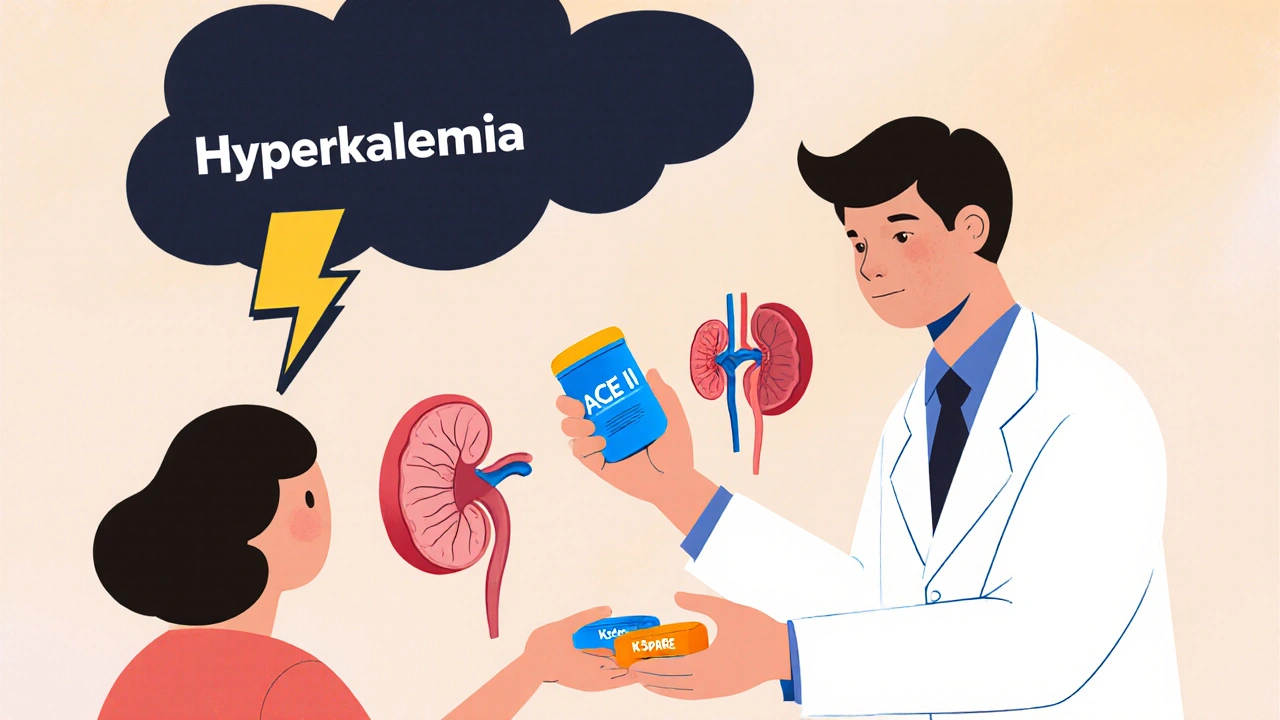ACE inhibitors – What You Need to Know
When working with ACE inhibitors, a class of drugs that stop the enzyme angiotensin‑converting enzyme from turning angiotensin I into angiotensin II. Also referred to as angiotensin‑converting enzyme blockers, they are a mainstay for treating hypertension, persistent high blood pressure that strains the cardiovascular system and managing heart failure, the inability of the heart to pump sufficient blood to meet the body’s demands. These ACE inhibitors have become a cornerstone of modern cardiology.
The renin‑angiotensin system, a hormonal cascade that regulates blood volume and vessel tone is the physiological stage where ACE inhibitors act. By blocking the conversion step, they reduce levels of angiotensin II, a potent vasoconstrictor, and lower aldosterone secretion. The result is relaxed blood vessels, reduced sodium retention, and ultimately lower arterial pressure. In simple terms, cutting off the “ang‐II” signal helps the heart work easier and the kidneys keep fluids in check.
Why doctors choose ACE inhibitors
Clinical experience shows that ACE inhibitors not only drop numbers on the sphygmomanometer but also improve survival after a heart attack. They shrink the left ventricle over time, slowing the progression of chronic heart failure. For patients with diabetic kidney disease, these drugs slow the loss of filtration capacity by lowering intraglomerular pressure. In short, they address the root causes of many cardiovascular problems, not just the symptoms.
Side‑effects are a real part of the picture, though most people tolerate the medication well. The most common complaint is a persistent dry cough, caused by increased bradykinin levels. A small percentage develop angio‑edema—swelling of the lips, tongue, or throat—which requires immediate medical attention. Blood potassium can rise, especially when combined with potassium‑sparing diuretics, so regular labs are advisable. Understanding these risks lets patients and doctors pick the right drug and dose.
Speaking of drugs, the ACE inhibitor family includes several widely used agents. enalapril, often the first choice for hypertension and heart failure is known for its long‑acting formulation. lisinopril, favored for once‑daily dosing and a good safety profile is popular in primary care. captopril, the oldest member, useful when rapid blood‑pressure control is needed starts working within an hour. Choosing among them depends on kidney function, once‑daily convenience, and cost considerations.
When an ACE inhibitor isn’t tolerated, doctors often switch to a different class that works downstream: angiotensin‑II receptor blockers (ARBs). While ARBs avoid the cough, they don’t raise bradykinin levels, so the side‑effect profile shifts. Still, ARBs are considered a second‑line alternative rather than a first choice, because the proven mortality benefit in heart‑failure trials is strongest with ACE inhibitors.
Patients also wonder how lifestyle fits with medication. ACE inhibitors don’t replace the need for a heart‑healthy diet, regular exercise, and weight control. In fact, the drug’s effectiveness can be amplified by limiting sodium intake, which reduces the stimulus for renin release. Moderate alcohol consumption and quitting smoking are additional steps that give the medication a better chance to work.
Monitoring is straightforward: blood pressure checks, periodic blood work for kidney function and electrolytes, and a quick question about cough or swelling at each visit. If side‑effects appear, dose adjustment or a switch to another ACE inhibitor can sometimes solve the problem before moving to a different class.
Below you’ll find a curated collection of articles that dig deeper into each of these angles—drug comparisons, dosing guides, condition‑specific advice, and safety tips. Whether you’re a patient wanting to understand why your doctor prescribed an ACE inhibitor, or a health‑professional looking for the latest comparison tables, the posts that follow cover the full spectrum of practical information.
Learn why ACE inhibitors combined with potassium‑sparing diuretics boost hyperkalemia risk, who is most vulnerable, and how to monitor, prevent, and treat dangerous potassium spikes.

